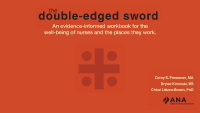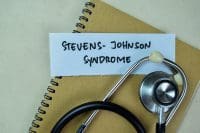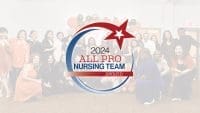Dimensions of pain distraction
I read with applause “Assessing the seven dimensions of pain” in the February issue. I work in a large teaching institution in the Midwest, where we have the luxury of an in-house acute pain service. Registered nurses are assigned 24 hours a day, and an anesthesiology fellow is on call.
Our collaborative practice promotes the inclusion of the many dimensions of pain. We also use several methods of distraction, including massage therapy, an in-house music channel for all patient rooms, an on-call chaplain, tape players with a variety of music patients can choose, and a musician who visits biweekly. Patients are referred to the musician by the acute pain service nurses. I have found these complementary strategies to be beneficial in providing a means of distraction to our patients.
Alice Jebrail, BSN, RNC
Howell, MI
2B or not 2B?
I agree with Kathleen Gaberson’s letter in the November 2007 issue, “Unpopular opinion on nursing credentials.” PhD(c) is a false representation of a person’s academic credentials. For those who simply must use the PhD credential before earning it, we could try this alternative: Change the credentials of candidates to “PhD2B.” Those who have actually completed their degrees can then use “PhD4Real.”
Rana Limbo, PhD, CNS-BC
La Crosse, WI
BusinessSpeak: The need to quantify quality
Kudos to the authors of the research article, “Why making the rounds makes sense” in the February issue. Like many sound nursing practices we’ve used for years, making the rounds is crucial to quality patient care, but to communicate with the business professionals who run healthcare facilities, we need to speak their language. We need to discuss how our outcomes affect the bottom line on their profit and loss statements.
I hope the authors will consider a follow-up study on how nursing rounds affect nursing time and readmissions. Based on my 40 years of nursing experience, I’d hypothesize that the overall time a nurse must spend with a patient will be reduced or the saved time could be used for patient teaching that will decrease patient readmissions. A study on the impact of nursing rounds on nursing errors would also be interesting.
Mattie Tolley, MSN, RN
Davis, OK
Important resource on preeclampsia
Thanks to the authors for all the information on follow-up and long-term care in “Preeclampsia: The little-known truth” (February issue). It stimulated my interest.
One of the authors’ references, The American College of Obstetricians and Gynecologists’ (ACOG) Practice Bulletin No. 33, January 9, 2002, is an unparalleled resource because ACOG collaborated with the National Institutes of Health’s Working Group on Research on Hypertension during Pregnancy to clarify some important guidelines.
Susan Spencer, BSN, RNC
Tyler, TX
Focus on bad behavior, not bad feelings
Disruptive physician behavior still poses a threat and a challenge to nurses, so I was glad to see your article in the March issue, “Don’t tolerate disruptive physician behavior.” The emphasis on reporting incidents of such behavior is important. However, I don’t agree with one piece of advice. The authors say that when discussing disruptive behavior with the disrupter, a nurse should state how the incident made her feel. Making statements about feelings can put a nurse in a vulnerable position and may be culturally inappropriate.
In the past, the responsibility for conflict resolution was always on the nurse. Let’s end that and put it on the offender and the organization. You don’t have to tell anyone how you feel.
Janet R. Katz, PhD, RN
Spokane, WA
We welcome your comments. You may submit letters to the editor electronically at www.AmericanNurseToday.com/letters. Or you may send them by regular mail to: Letters to the Editor, American Nurse Today, c/o HeatlhCom Media, 259 Veterans Lane, 3rd Floor, Doylestown, PA 18901. Please include your full name, credentials, city, state, and daytime phone number or e-mail address. Letters should contain no more than 250 words and will be edited for grammar, length, content, and clarity. All letters are considered American Nurse Today property and therefore unconditionally assigned to American Nurse Today.


















